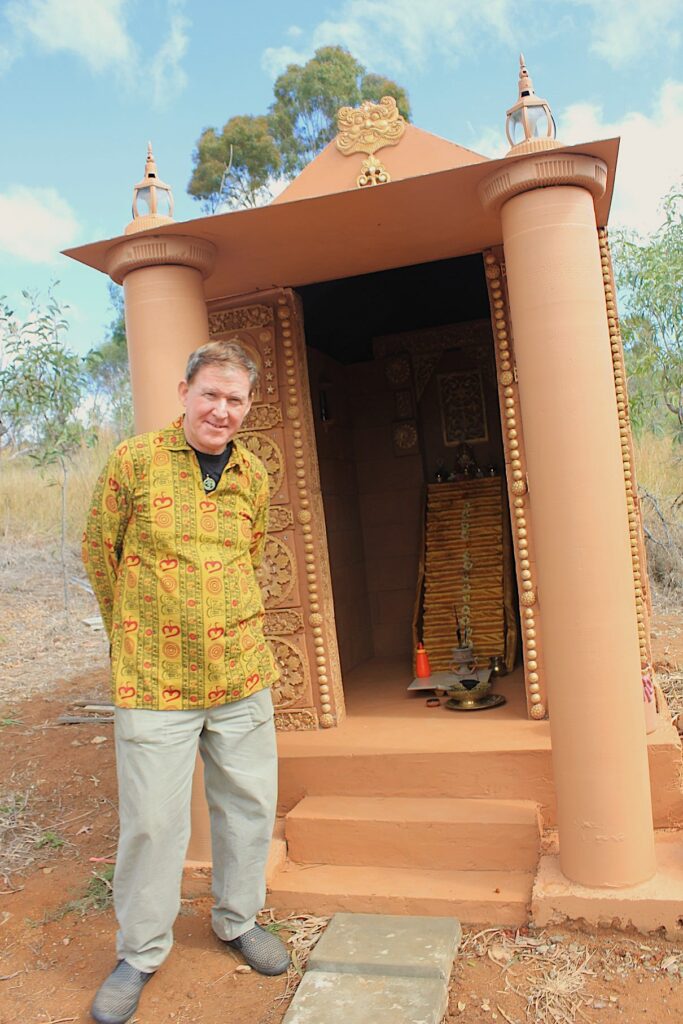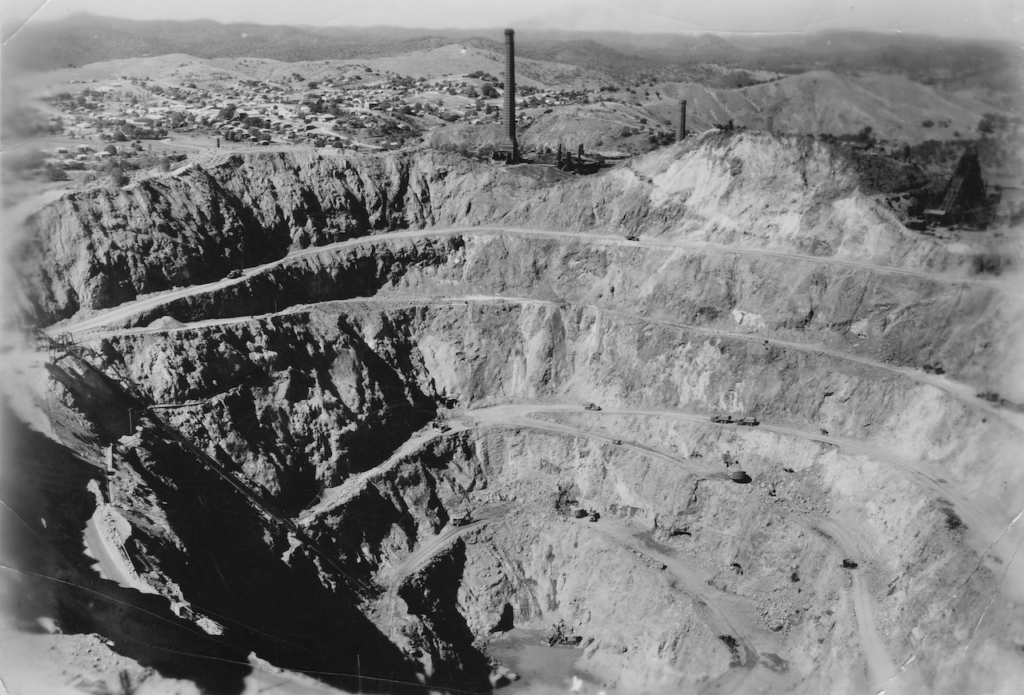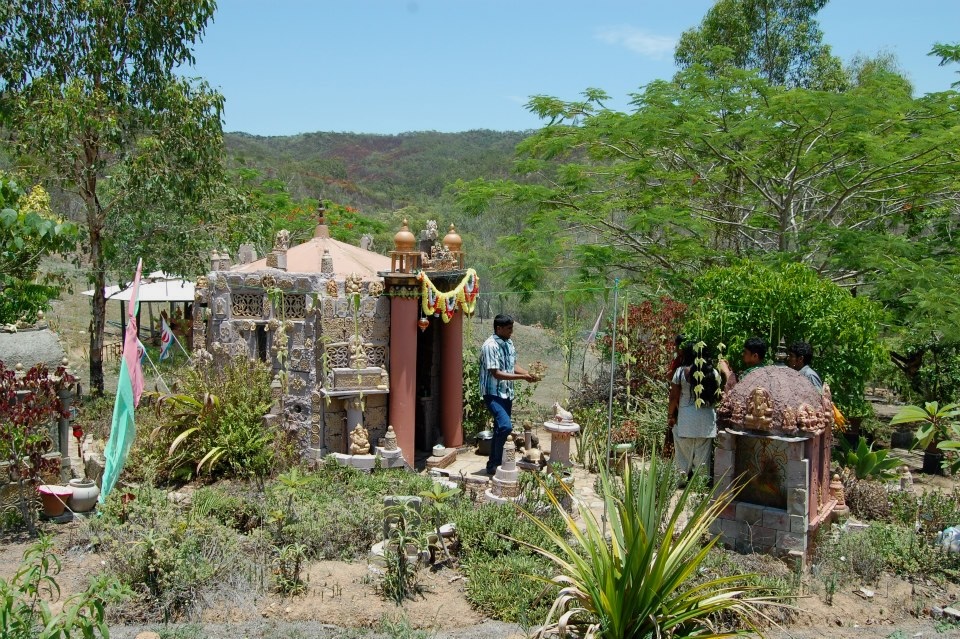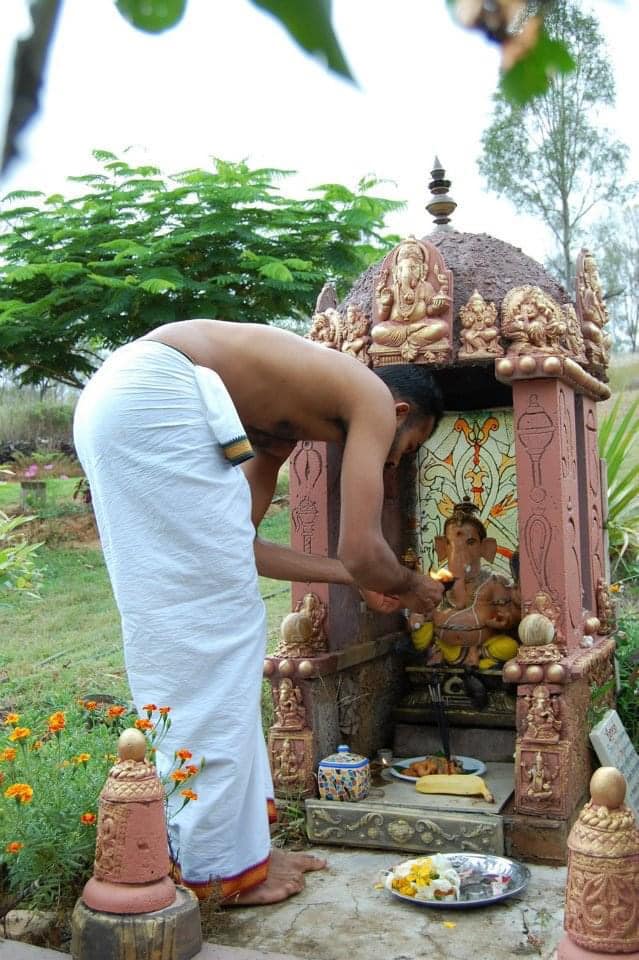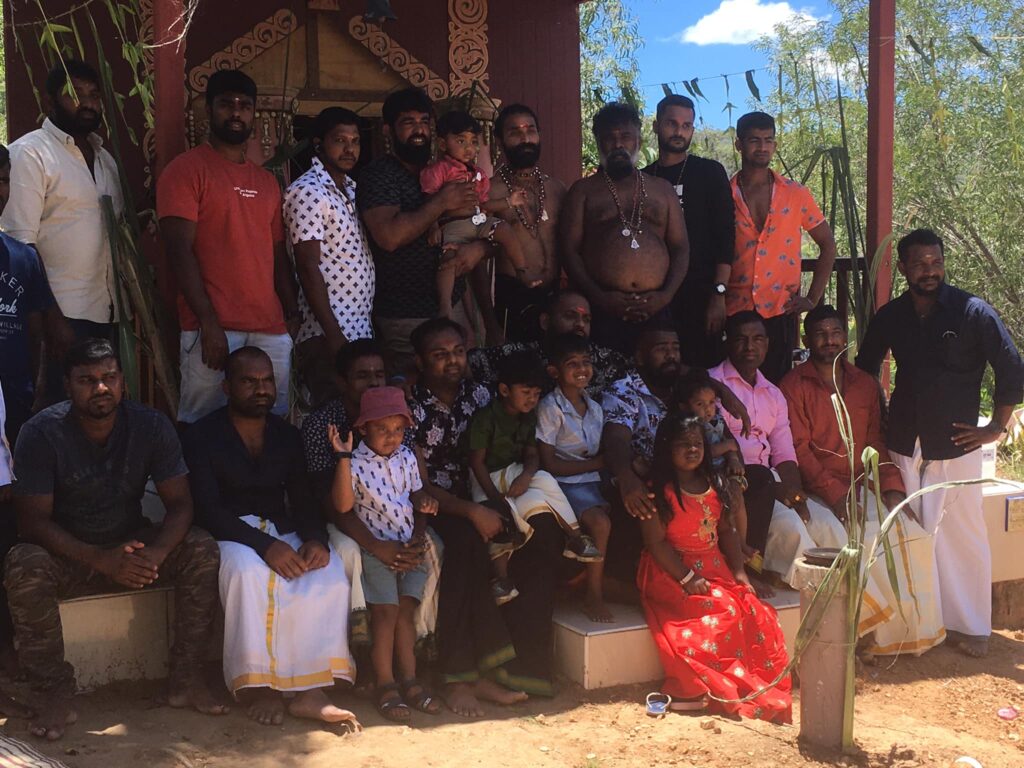Nicholai von Tonslamann
An artist and traveler, Nicholai has transformed the surrounds of his Mount Morgan home, building shrines and temples dedicated to Hindu gods and goddesses.
By Adam Bowles
This is a 5 minute read and 21 minute video, published June 2024.
Driving south from Rockhampton, the Burnett Highway begins to climb Mount Morgan as it passes Poison Creek Road branching to the right.
The ominous name is an evocative reminder of the legacy of the Mount Morgan mine — once the largest gold mine in the world — that had been the town’s centre of industry from its opening in 1882 until 1981. The discovery of gold at Mount Morgan was followed by copper and silver. After a hundred years of mining its peak had been transformed into a series of lakes, now fenced off for public safety. Poisoned waterways are a common consequence of mining activities; the nearby Dee River was inundated with toxic heavy metals as recently as 2013.
Poison Creek Road soon veers to the south and becomes Razorback Rd, snaking its way up the range until it rejoins Burnett Highway at the entrance to the Mount Morgan township. Off Razorback Ridge not far from this juncture are signs pointing to a seemingly unlikely destination — a Shiva Mandir, a Hindu temple.
Travels abroad
The signs point to a property owned by artist and traveler Nicholai von Tonslamann. Over the past twenty years, Nicholai has transformed the once barren grounds of his property — the aridity of which recalled to him his travels in Rajasthan, India — into lush garden interspersed with shrines and temples dedicated to Hindu divinities.
In the late 1960s, like many young Australians of the time, Nicholai was eager to see the world. Resolving to depart his New South Wales central coast home, Nicholai left for South Africa. Establishing himself in Durban, he made friends in the large South Asian community there and soon began to attend mosques and participate in prayer. In time, he became a Sufi. Even so, navigating the racial politics of apartheid South Africa proved challenging, and he returned to Australia.
For a time, Nicholai struggled with illness and a sense of isolation in Sydney. Resolving to travel again, he spent time in Sumatra, and then Singapore and India. He began to read the Mahabharata and Ramayana, great epics associated with Hinduism, and had an influential encounter with a Hindu priest at a temple in Singapore.
A home transformed
Returning to Australia, Nicholai settled first in Rockhampton, before purchasing the Mount Morgan property. In his garden he placed a Shiva lingam , which he had purchased on his travels, and built around it a small temple space using various moulds and cast blocks arranged in patterns.
Some local Hindus from Central Queensland’s South Asian community learnt of the existence of the lingam and began to visit to perform pujas.
Nicholai’s temple garden had come to the notice of Central Queensland’s South Asian communities. They became building collaborators, ritual partners, and pilgrims, mingling their own interests and experiences with those of the artist.
As more visitors arrived, bringing their varied interests and experiences, Nicholai built more spaces, often in collaboration with his visitors, adding shrines to Durga, Lakshmi, Murugan, Ganesh, and Vishnu, and then, with the help of the Sri Lankan Tamil-speaking community, the largest temple space, dedicated to Ayyappan.
Oral history interview: Nicholai von Tonslamann
By now the temple garden had become a lush statement of Nicholai’s curiosity, artistry, and peripatetic experiences. While he no longer regards himself as a person of strong religious belief, his artistic inclinations and the aesthetic pull of Hindu traditions have led to him to build a remarkable and tranquil religious site. The traveler found himself a home, and the home became a destination for other travelers.
Related articles


